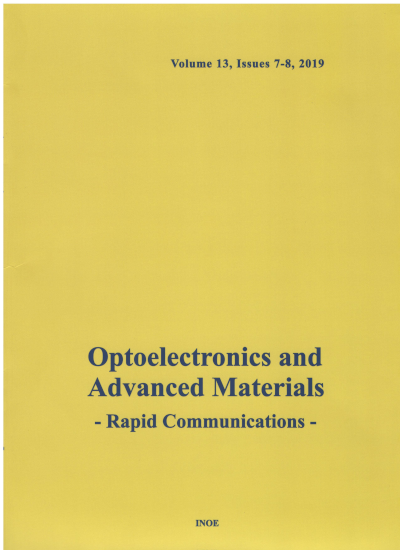Effect of self-modulation to optical fiber loop mirror signal on chaotic laser diode dynamics
R. ABBAS1,*
Affiliation
- First Karkh Directorate of Education, Ministry of Education, Baghdad, Iraq
Abstract
The laser diode (LD) signal is injected inside an optical fiber loop mirror (OFLM), which was constructed by two identical
pieces of 1X2 couplers with a 10:90 coupling/splitting ratio. Two arms for the etalon are selected in such a way that the first
one of them has 10% optical power and the second has 90%. Interfering two signals gives rise to signal fluctuations before
emerging on two sides: backward toward the LD device and forward toward the detection then modulation. Results
indicated that signal power inside OFLM is affecting the overall resulted signal in a different manner to the case of the
existence of both optical feedback (OFB) and the optoelectronic feedback (OEFB). The effect of variation in optical signal
strength inside OFLM and self-modulated radio frequency strength is founded on the number of output emerging signal
spikes in roughly identical Poly Fit functions, which indicate the dominant type of nonlinearities. Values for these spikes
fluctuated from 33 to 58 against the former effect and from 15 to 48 against the latter one. Results for chaotic dynamics
associated with the LD subjected to both OFB and self-chaotic modulation, simultaneously with the application of OEFB,
were found to be more sensitive in the case of pumping near the LD free-running threshold. Resulted threshold reduction
values are founded changeable versus those three techniques parameters, which gives the facility to make dynamic chaotic
control. The latter found application in simulating unite of optical neural network.
Keywords
Optical Feedback, Optical Fiber Loop Mirror, Opto-electronic Feedback, Laser Diode, Chaotic Dynamics, Neural Network.
Citation
R. ABBAS, Effect of self-modulation to optical fiber loop mirror signal on chaotic laser diode dynamics, Optoelectronics and Advanced Materials - Rapid Communications, 19, 3-4, March-April 2025, pp.154-169 (2025).
Submitted at: Oct. 19, 2024
Accepted at: April 3, 2025
